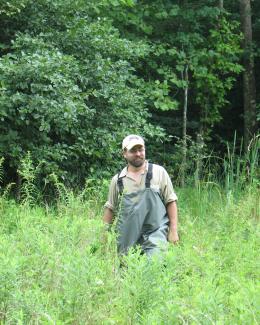Abstract
A large-scale ecosystem manipulation (Spruce and Peatland Responses under Climatic and Environmental Change, SPRUCE) is being constructed in the Marcell Experimental Forest, Minnesota, USA, to determine the effects of climatic forcing on ecosystem processes in northern peatlands. Prior to the initiation of the manipulation, we characterized the solid-phase peat to a depth of 2 meters using a variety of techniques, including peat C:N ratios, δ13C and δ15N isotopic composition, Fourier Transform Infrared (FT IR), and 13C Nuclear Magnetic Resonance spectroscopy (13C NMR). FT IR determined peat humification-levels increased rapidly between and 75 cm, indicating a highly reactive zone. We observed a rapid drop in the abundance of O-alkyl-C, carboxyl-C, and other oxygenated functionalities within this zone and a concomitant increase in the abundance of alkyl- and nitrogen-containing compounds. Below 75-cm, minimal change was observed except that aromatic functionalities accumulated with depth. Incubation studies revealed the highest methane production rates and greatest CH4:CO2 ratios within this and 75 cm zone. Hydrology and surface vegetation played a role in belowground carbon cycling. Radiocarbon signatures of microbial respiration products in deeper porewaters resembled the signatures of dissolved organic carbon rather than solid phase peat, indicating that more recently photosynthesized organic matter fueled the bulk of subsurface microbial respiration. Oxygen-containing functionalities, especially O-alkyl-C, appear to serve as an excellent proxy for soil decomposition rate, and in addition should be a sensitive indicator of the response of the solid phase peat to the climatic manipulation.



